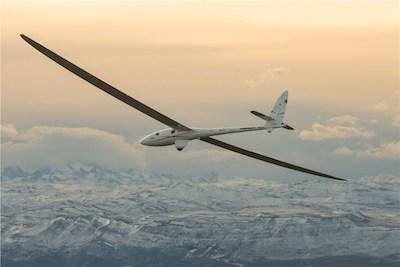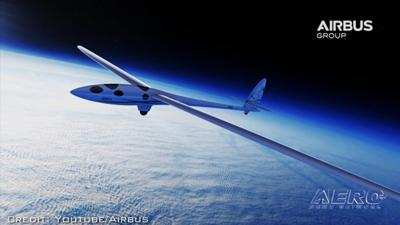Glider to Reach 90,000-Feet
Airbus’s Perlan Mission II is a unique and fascinating initiative undertaken by the European aviation and aerospace consortium for the expressed purpose of flying an engineless glider to the edge of space—higher than any winged aircraft has yet operated in manned, level flight.

The Perlan II mission sets out to make important discoveries germane to high-altitude flight, atmospheric phenomena, and alleged climate change.
The historic endeavor instantiates the culmination of decades of research conducted by a tireless international team of aviators and scientists who’ve selflessly volunteered their time and expertise for the nonprofit Perlan Project. The enterprise, based in Minden, Nevada, is supported by Airbus and a group of sponsors that includes Dennis Tito, Weather Extreme Ltd., Raytheon (United Technologies), BRS Aerospace, and Thales.
On 02 May 2023, representatives of Airbus’s Perlan Mission II set forth in a statement that a team comprising expert pilots and engineers had successfully completed a flight test campaign in the U.S., thereby clearing the way for a third quarter 2023 attempt to set a new aviation world altitude record for manned, level flight.
Perlan Project CEO Ed Warnock remarked: “Over the past decade, we have been on a thrilling adventure to inspire, educate, and explore in the stratosphere, and Airbus has been a great partner on that journey as together we’ve attempted—and achieved—the seemingly impossible.”
The pressurized Perlan II glider—which, in 2018, set the subsonic world altitude record at over 76,000-feet—was shipped from the U.S. on 01 May and is currently enroute to El Calafate, Argentina. Upon the aircraft’s arrival in South America, the personnel of the Perlan Project will attempt to soar the experimental glider over the Patagonian Andes, where atmospheric conditions are optimal, to its service-ceiling of 90,000-feet.
Airbus Americas chairman and CEO C. Jeffrey Knittel opined: “If a glider, which is a truly zero-emission aircraft, can become the highest-flying aircraft of all time, it sends a powerful message that decarbonization of aviation is no impediment to achievement, and can even be an enabler.”
A research platform that emits no exhaust, Perlan II is ideally suited to the high-altitude atmospheric research its stewards intend to conduct in hopes of determining whether or not climate-change is an actual phenomenon or a fabrication of governments and activists. The aircraft will soar to altitudes at which the prevailing atmospheric pressure approximates that of Mars, in so doing providing unique opportunities for aerodynamic studies related to turbulence, extreme weather, and future space exploration.
By dint of the Perlan Project’s STEM partnership with Teachers in Space, the Perlan II aircraft will also carry aloft experiments designed by students.

Airbus’s sponsorship of The Perlan Project, which commenced in 2014, facilitated completion of the Perlan II’s construction. The glider, described by Mr, Warnock as “a space capsule with wings,” is equipped with sophisticated life support systems and instrumentation by which pilot safety is assured, if not wholly guaranteed.
The aircraft is able to soar, sans engine, to record altitudes by virtue of exceedingly rare air currents known as “stratospheric mountain waves,” which form when mountain winds are strengthened by the polar vortex.
The Airbus Perlan Mission II team, which comprises a company of the aviation industry’s most celebrated test pilots and renowned climate scientists, will conduct its 2023 flying campaign over an eight-week period spanning late-July through mid-September 2023. The aforementioned interval corresponds with the highest statistical likelihood of Southern Hemispheric mountain wave activity.
 ANN's Daily Aero-Linx (05.02.24)
ANN's Daily Aero-Linx (05.02.24) ANN's Daily Aero-Term (05.02.24): Touchdown Zone Lighting
ANN's Daily Aero-Term (05.02.24): Touchdown Zone Lighting Aero-News: Quote of the Day (05.02.24)
Aero-News: Quote of the Day (05.02.24) ANN FAQ: Contributing To Aero-TV
ANN FAQ: Contributing To Aero-TV NTSB Final Report: Cirrus Design Corp SR20
NTSB Final Report: Cirrus Design Corp SR20




